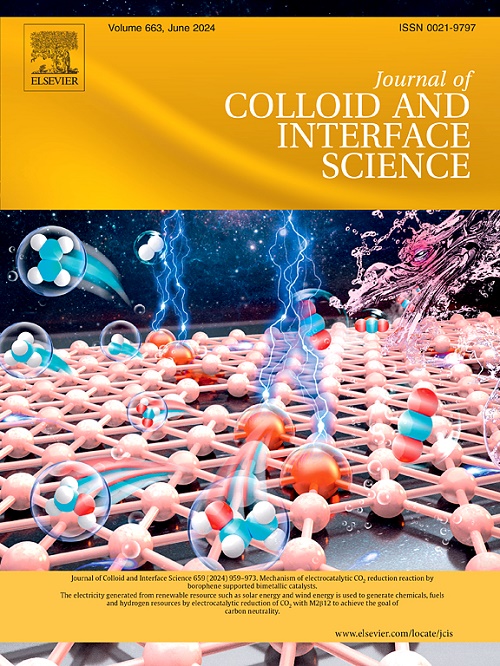Integrating MXene with carbon dots modified bacteria as hybrid biofilm for photo-assisted microbial fuel cells
IF 9.4
1区 化学
Q1 CHEMISTRY, PHYSICAL
引用次数: 0
Abstract
The development of microbial fuel cells (MFCs) places a high demand on the building of high-performance exoelctrogenic biofilm. In this study, by the electrostatic self-assemble between Ti3C2Tx MXene and carbon dots-modified exoelctrogenic bacteria (B@CDs), a MXene-based hybrid biofilm has been developed for MFCs. The modification of positively-charged CDs onto bacterial surface not only builds the bridge between negatively-charged MXene and bacterial cells for the construction of hybrid biofilm, but also endows the photoelectric conversion ability for the realization of multiple energy transfer in hybrid biofilm. Meanwhile, the MXene network paves high-speed pathways for electron transfer during microbial catalytic oxidation and photoelectric conversion processes. As a result, the MFC with this MXene-based hybrid biofilm has achieved a maximum power density of 7518.5 mW/m2 in darkness, which increased to 9396.1 mW/m2 under light illumination. This work not only offers a good start for the development of MXene-based hybrid biofilm, but also upgrades the performance of photo-assisted microbial fuel cells to a high level for highlighting their application potential as the green and sustainable energy source.

求助全文
约1分钟内获得全文
求助全文
来源期刊
CiteScore
16.10
自引率
7.10%
发文量
2568
审稿时长
2 months
期刊介绍:
The Journal of Colloid and Interface Science publishes original research findings on the fundamental principles of colloid and interface science, as well as innovative applications in various fields. The criteria for publication include impact, quality, novelty, and originality.
Emphasis:
The journal emphasizes fundamental scientific innovation within the following categories:
A.Colloidal Materials and Nanomaterials
B.Soft Colloidal and Self-Assembly Systems
C.Adsorption, Catalysis, and Electrochemistry
D.Interfacial Processes, Capillarity, and Wetting
E.Biomaterials and Nanomedicine
F.Energy Conversion and Storage, and Environmental Technologies

 求助内容:
求助内容: 应助结果提醒方式:
应助结果提醒方式:


